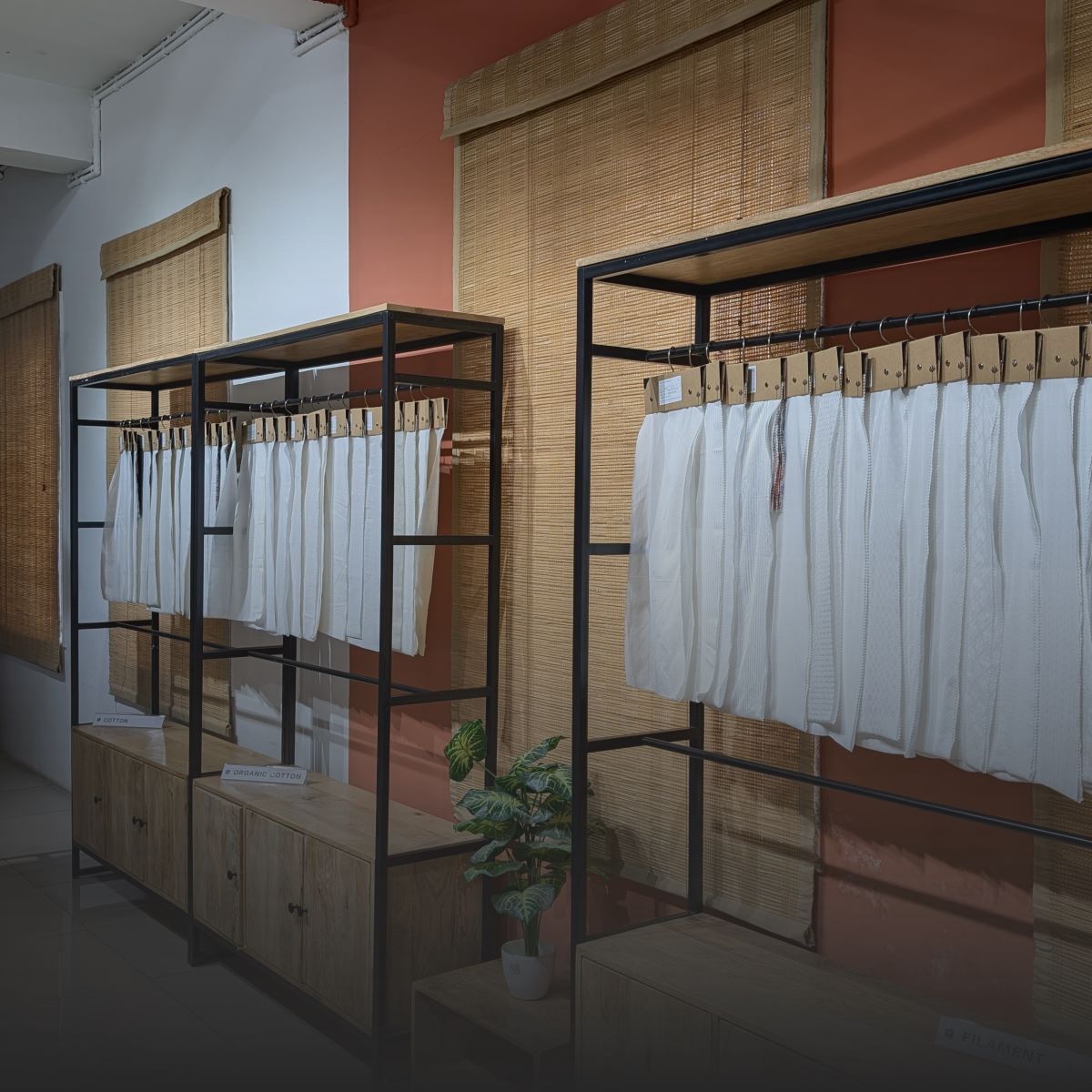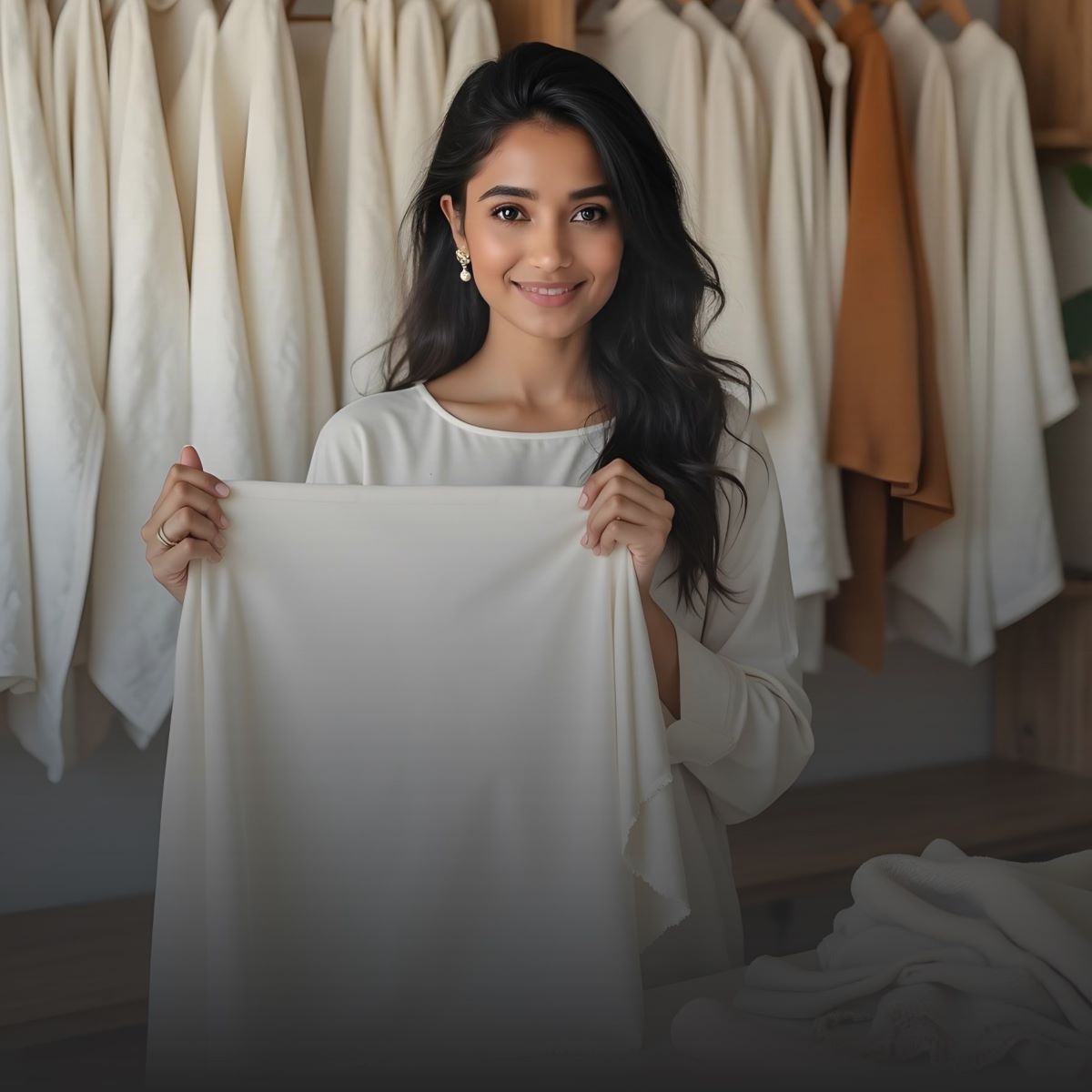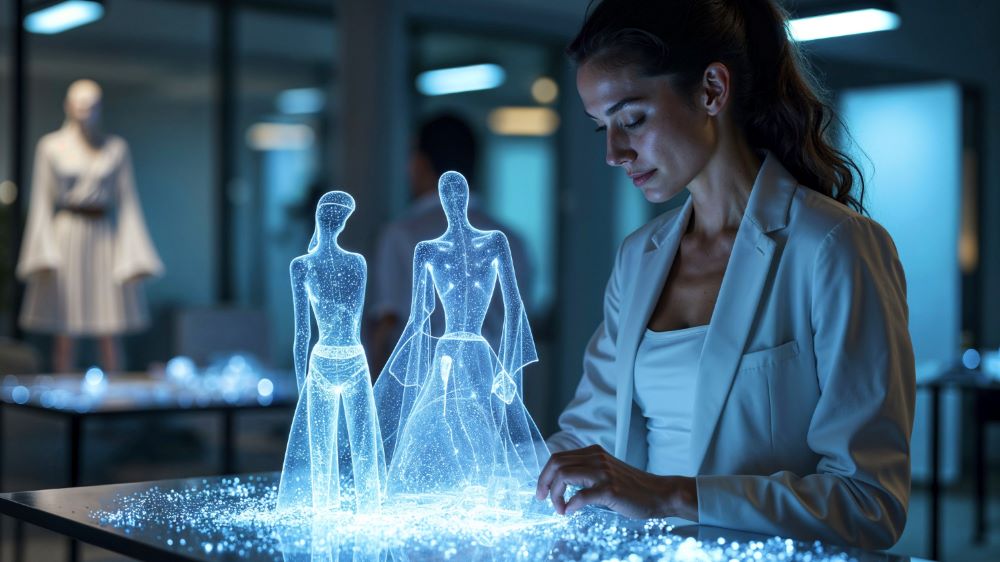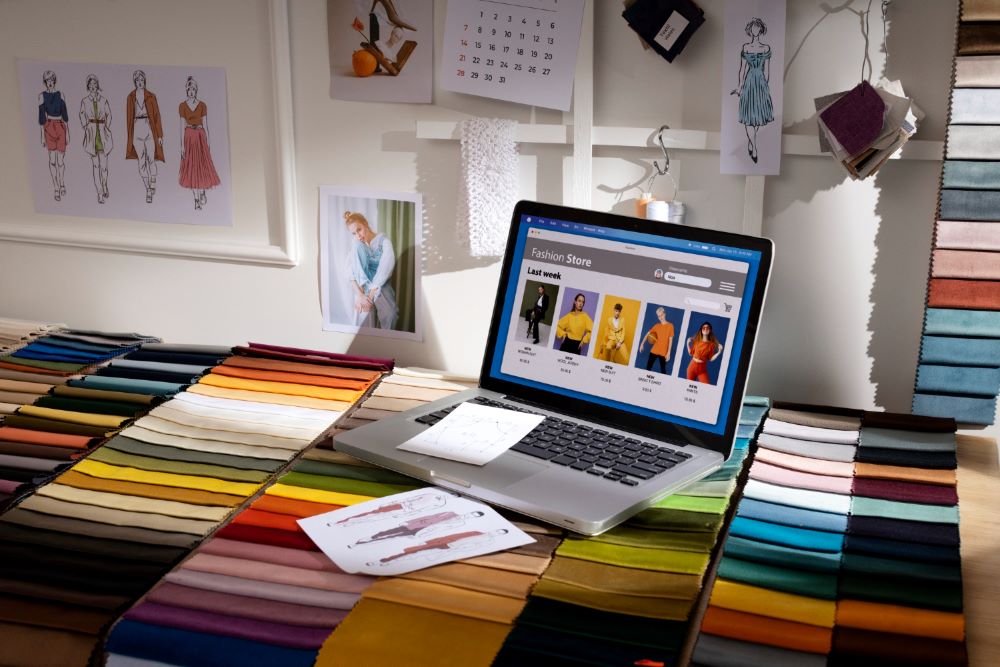The fashion industry is changing and at the heart of this transformation is artificial intelligence (AI). Once seen as a futuristic concept, AI is now driving innovation across every part of fashion, from design and manufacturing to personalized shopping experiences.
In fact, the AI market in fashion, valued at $270 million in 2018, is set to soar to $4.4 billion by 2027, growing at a staggering rate of 36.9% annually. This growth shows just how quickly AI is becoming an essential tool for fashion brands looking to stay competitive, reduce waste and offer personalized experiences that today’s consumers demand.
In this blog, we will explore how AI is revolutionizing the fashion world and why it is set to reshape everything we know about design, shopping and sustainability. Ready for the future of fashion? It is already here.
You Can Also Read This For More Information: The Role of AI in Predicting Fabric Trends in the U.S.
Reinventing Fashion Design with AI

AI is transforming the way fashion is designed, making the process faster, smarter and more creative. By cutting prototyping time by over 30%, AI helps brands get to market quicker and with more flexibility, allowing for rapid design changes and faster iterations (McKinsey, 2021).
But AI does more than just speed things up. It actively sparks creativity, generating new design ideas and adapting to the latest trends based on data from previous collections and customer feedback. This means brands can stay one step ahead and create designs that are always in tune with what consumers want.
Imagine taking a simple mood board or sketch and turning it into a 3D model or high-fidelity visual in minutes. That is the power of AI. It brings ideas to life, allowing designers to see and refine their creations before they even think about production.
Perhaps the biggest advantage of AI in fashion design is its impact on sustainability. With AI tools, designers can optimize material use and reduce waste. Brands like H&M have already made strides in cutting material waste by up to 35%, thanks to AI-driven design tools (Statista, 2023).
AI is making fashion design faster, smarter and more sustainable. This is the future of fashion, where creativity, efficiency and responsibility come together.
AI-Powered Supply Chain and Manufacturing

AI is changing fashion supply chains, making them quicker and more efficient. With AI tools, brands can lower inventory costs by up to 25% by predicting demand and planning better. This ensures products are where they need to be, when they need to be there, helping to reduce waste.
In manufacturing, AI and robotics are improving production. These tools automate tasks, speed up processes and reduce mistakes, which helps brands deliver products faster and more efficiently.
AI also helps reduce waste by managing product returns and excess inventory. For example, companies like Stitch Fix have cut material waste by 35%, showing that AI can make fashion production more sustainable.
AI is not only saving costs but also making fashion production greener and more efficient.
AI-Enhanced Customer Experience

AI is changing the way customers shop, making their experience easier and more personal.
- Virtual Try-Ons and Augmented Reality
Virtual try-on tools help customers see how a product will look on them before they buy. This leads to better buying decisions and increases conversion rates by up to 40%, which means fewer returns and more satisfied customers.
- Personalized Shopping Journeys
AI looks at each customer’s preferences and suggests products that match their style. This leads to more relevant recommendations, helping increase sales by 20–30% and making the shopping experience feel more personal.
- Intelligent Customer Support
AI-powered chatbots and virtual assistants provide fast customer service. Customers get quick answers to their questions, whether it's about a product or after making a purchase, making the whole process smoother and more efficient.
In short, AI is making shopping easier, more personal and faster for customers.
For More Information: How AI Helps Fashion Brands Improve Productivity and Sustainability
Revolutionizing Fashion Marketing with AI

Fashion marketing is no longer guesswork. AI is giving brands sharper tools to connect with customers in real time and with real impact.
- Spotting Trends Early
Instead of relying only on seasonal predictions, brands now use AI to scan social media, search patterns and shopping behavior. This helps them spot emerging trends faster and plan collections that match what people are actually looking for.
- Smarter Campaigns, Less Effort
Creating ads and product posts manually for every customer type takes time. AI tools can now generate product captions, email copy and ad visuals that match different audiences, making campaigns faster to launch and more personal.
- Targeting the Right People
Not every shopper is the same. AI segments customers by how they shop, what they like and when they are most active. This allows brands to send the right message to the right people at the right time, without wasting budget.
With AI, fashion marketing becomes more data-driven, less repetitive and much more tailored to each shopper’s taste, giving brands a clear edge in a crowded market.
In-Store Innovation: The AI-Powered Retail Space

AI is transforming retail stores by improving layout planning, optimizing staff allocation and enhancing customer experience through Augmented Reality tools.
- Smart Layouts That Improve Store Performance
AI tools now analyze store traffic patterns to plan better layouts. This helps fashion retailers make sure high-demand items are placed in accessible zones, improving product visibility and boosting sales. Stores can also test different layout designs virtually, saving time and reducing guesswork.
- Efficient Staffing Based on Real-Time Needs
Using predictive analytics, AI suggests when and where staff should be present in the store. This reduces wait times, prevents overstaffing and ensures smoother day-to-day operations. For example, AI can flag peak hours or areas that need more floor support.
- Augmented Reality for Smarter Shopping
AR devices are changing how store teams and customers interact with products. Sales staff can use AR to view real-time product information, inventory status or suggest alternatives, all while engaging the customer. Consumers can also scan items to see reviews, price comparisons or style suggestions instantly.
Ethical AI in Fashion: Ensuring Sustainability and Fair Practices

AI helps fashion brands reduce waste, protect consumer privacy and make responsible choices in design, manufacturing and marketing.
- Protecting Privacy While Personalizing
AI allows brands to personalize shopping experiences, but there must be clear boundaries. Fashion businesses need to use consumer data responsibly, only collecting what is necessary and keeping it secure. Clear consent, transparent data policies and data anonymization are key steps. Ethical use builds trust and long-term loyalty.
- Supporting Sustainable Production
AI helps brands predict demand more accurately, so they only produce what’s needed. This reduces overproduction, lowers inventory waste and cuts down on unsold stock. AI also helps improve design, which means less material is wasted during the creation process. Brands like H&M are already using AI to reduce fabric waste and make their collections more efficient.
- Rethinking Labor and Environmental Impact
As automation increases, fashion brands need to think about how it affects workers. Ethical use of AI means not replacing jobs without providing reskilling or support. It also means using AI to ensure fair labor practices, like tracking working conditions in supply chains around the world.
With rising demand for ethical sourcing and sustainable production, Fabriclore helps brands choose eco-conscious fabrics and streamline sourcing in a responsible way. As AI highlights trends or inventory needs, Fabriclore enables quicker, ethical sourcing that aligns with both market demand and sustainability goals.
Conclusion: AI as the Key to Fashion's Future

AI is changing how the fashion industry works. It makes designing faster, improves how clothes are made and delivered and helps brands give shoppers more personal experiences. It also helps reduce waste, which is better for the environment.
AI is not just a future idea. It is already being used. It can turn a sketch into a 3D design, predict what styles people will want and help brands make the right amount of clothes. This saves time, money and materials.
When used the right way, AI helps fashion brands work smarter, pollute less and treat people fairly. It is not just about keeping up. It is about building a better and more responsible future for fashion.
Also Read : How To Use AI To Predict Fashion Trends For Your Clothing Business In The USA
FAQs
1. How is AI used in the fashion industry?
AI helps fashion brands design clothes faster, manage inventory better, understand trends and give customers more personal shopping experiences. It also helps reduce waste and improve how stores and websites work.
2. What are some examples of AI in fashion design?
AI tools can turn mood boards or sketches into finished designs or 3D models. These tools also suggest new styles and help brands keep up with fast-changing fashion trends.
3. How does AI help manage supply chains in fashion?
AI improves planning and helps avoid overproduction. It predicts what items will sell, keeps track of inventory and supports faster and smarter shipping and restocking.
4. How does AI improve the in-store shopping experience?
In stores, AI helps plan better layouts and assign staff where needed. AR tools show product info and let customers try items virtually, making shopping easier and more fun.
5. Why is ethical AI important in fashion?
Ethical AI makes sure personal data is safe, workers are treated fairly and the environment is protected. It helps brands use AI in ways that are good for people and the planet.
Unlock premium quality and unbeatable prices with the top wholesale fabric supplier in the USA!
We also happen to be a magnet for suggestions, and would love to catch yours….throw us yours on hello@fabriclore.com




